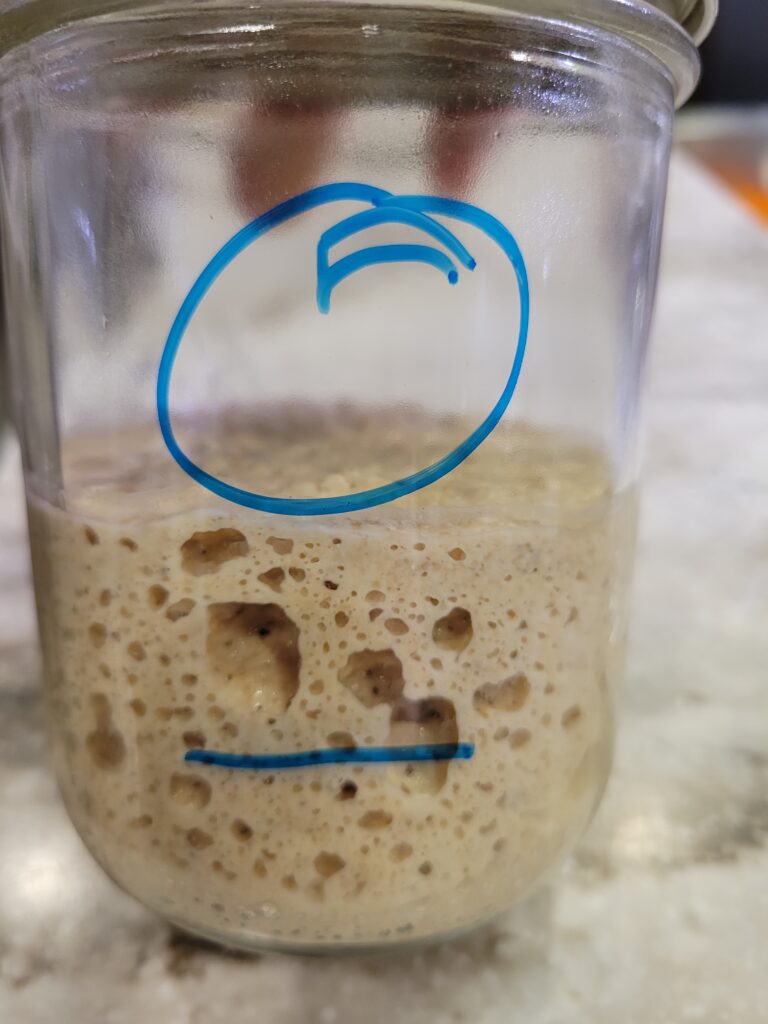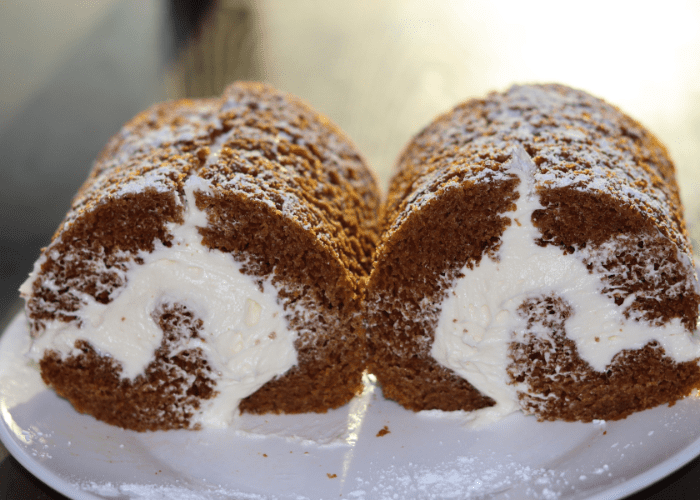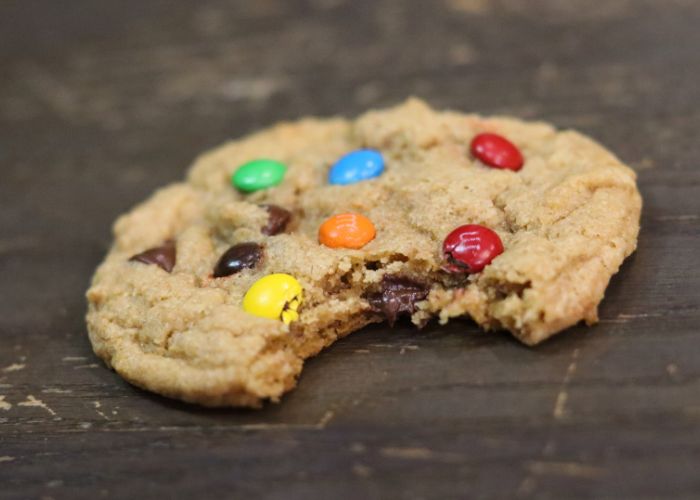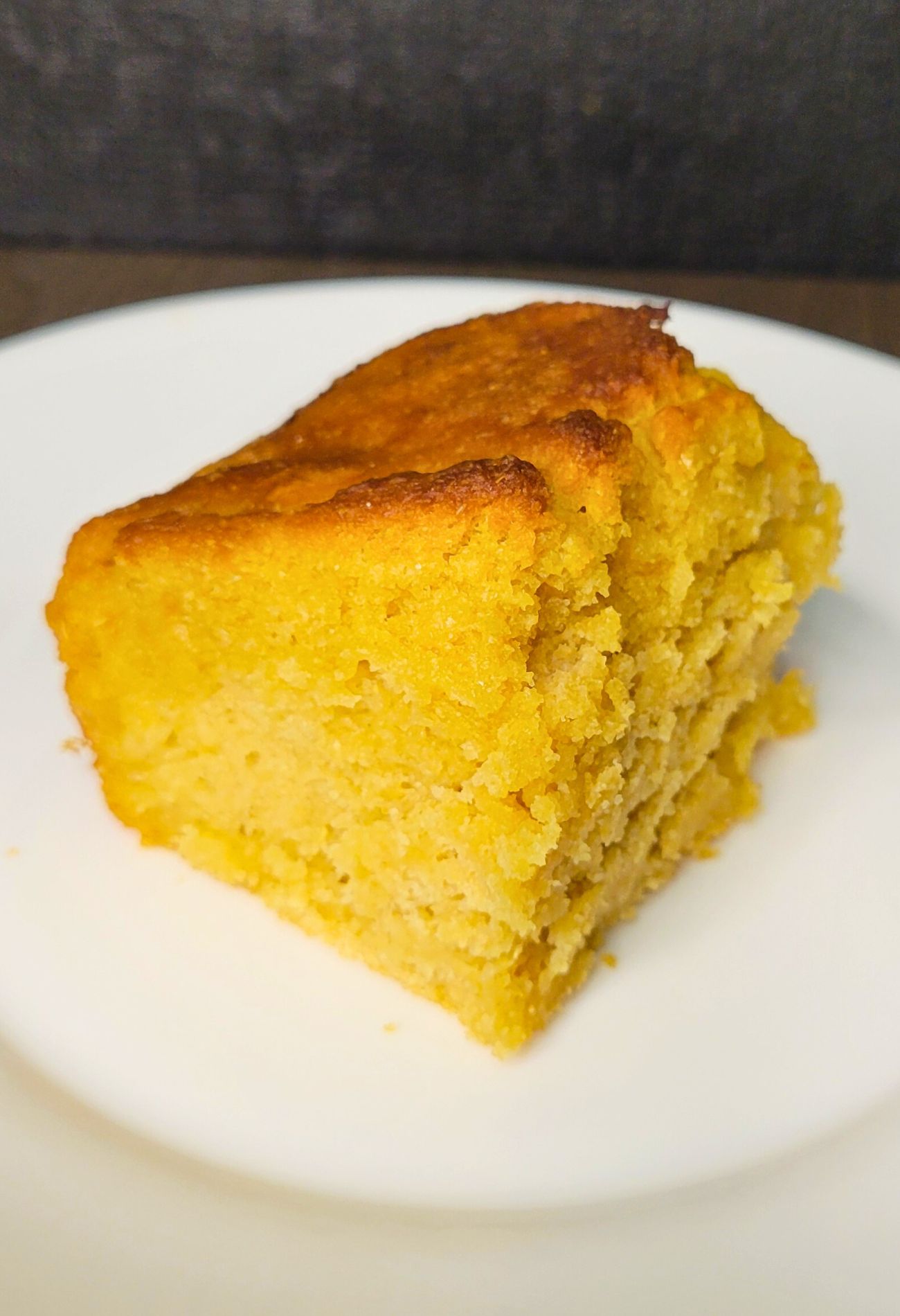How To Feed Sourdough Starter With Fresh Milled Flour – Switch Over
How To Feed Sourdough Starter With Fresh Milled Flour. Yes, you can easily switch over your Commercial White flour fed Sourdough Starter to feeding with fresh milled flour. I get a lot of questions about how to feed and maintain a sourdough starter with Fresh Milled Flour. So, I am going to try to explain it and keep it as simple as possible.

How To Get Started Using Fresh Milled Flour To Feed Your Sourdough Starter
First, these steps are for an already established sourdough starter, even if it is being fed by commercial white flour. So, let’s transition your sourdough starter over to fresh milled flour and maintain it. If you are looking for a beginner starter culture, HERE is one online, but you may be able to find a friend or someone local that would be willing to give you a little of their sourdough starter.
If you are interested in starting your very own Fresh Milled Flour Sourdough Starter from scratch, I have a post & Video on that. I will walk you through how to get it going, and even make one right along side of you. I talk about the issues that could arise, and how to trouble shoot them. So, if you have been wanting to start your own I recommend you start HERE.

What You Need
- Established Sourdough Starter
- Filtered Water (not chlorinated water)
- Fresh Milled Flour
- Kitchen Scale

How You Do It
- First, in a clean bowl, pour out an amount of sourdough starter. Weigh it in grams. (For an Example, let’s use 25 grams of starter)
- In the same bowl, pour double the amount of filtered water and stir (For the same example, use 50 grams of water)
- Next, Mill the same weight of flour as water. (For that example, mill 50 grams of wheat berries, which will yield 50 grams of flour)
- Mix this all together so there is no dry flour showing.
- Store in a container that is NOT airtight!
- If storing on your counter, feed once per day around the same time of day.
- If storing in the fridge, feed once per week.

This is my Electric Stone Grain Mill I use to mill my flour to feed “Bubbles,” my sourdough starter. You can find it HERE
Tips For Feeding Fresh Milled Flour To Your Sourdough Starter
- Don’t use bleached flour at any step in your sourdough journey, it would be better to skip a feeding than it would be to feed bleached flour.
- You can slowly transition fresh milled flour a little bit in each feeding which will be a smoother transition. However, I just switched mine over “cold-turkey” style, and it was perfectly fine after a few feedings over a few days, it was ready to go.
- Use filtered water, I use the water from my refrigerator which has filters before it even reached the fridge. You could use bottled spring water as well. You just don’t want chlorinated water.
- If all you have available is chlorinated water, I have heard many have success if they let the water sit out the night before, then using it for feeding. But, I have not done this method myself.
- I have used all sorts of wheat varieties in my feedings. Typically, I will keep any extra flour that I have milled in a freezer safe container, and use that for feeding. So, it is a mix of all different wheat varieties.
- If I had to pick one wheat to use, I would choose hard white wheat. You can find that HERE
- I like to keep my sourdough starter a little on the dough ball side, just because I find it need to be fed less often. When I make it loose and thin, then it sometimes needs fed twice a day. Over time, you will find what you prefer.
- However, I do like to mix it thin if I am going to be making something like pancakes! You can watch us make Sourdough Pancakes HERE
- If you are looking for a boost in feeding, try feeding some fresh milled Rye flour. Sourdough starter LOVES Rye flour! It will most likely more than double with this feeding. I have a post on Rye HERE
- I have a little video short coming soon HERE

I made this Pumpkin Roll With My Sourdough Starter and some fresh milled flour. That recipe can be found HERE
Best Tip For Feeding Sourdough Starter
Lastly, I think the best tip for feeding your sourdough starter, is to try to plan ahead. I keep my sourdough starter small unless I know I am going to be using it. I will mix it with more flour and water if I know I want to use a lot of it. For example, If I know I am going to make Sourdough Cookies that take 120g of starter, and I want to make some Sourdough Cupcakes that also take 120g, I will make sure I have at least 240g total starter, plus a little for feeding. (Basically, I will use 60g of starter, add 100g water and 100g fresh milled flour to give me a total of 260g = 240g for 2 recipes, and 20g for feeding)

This is our favorite Sourdough Cookie Recipe ever, HERE
Can I Make Sourdough From 100% Fresh Milled Flour?
Yes, it can be done with some tweaking. I have a great recipe that uses 100% fresh milled flour to make a sourdough bread loaf. There are some things you need to differently than you would have done with regular white flour, and I go over all of that in the Sourdough Bread Loaf Recipe post HERE.
I also have a Sourdough Bread Bowl Recipe along with a video you can watch me make HERE.

Make Your Own Sourdough Starter From Scratch With Fresh Milled Flour
If you don’t already have a sourdough starter, but are wanting to make one with 100% fresh milled flour from scratch, I am here for you! I have a video resource that goes over how you can make your very own sourdough starter using only freshly milled flour. I also go over troubleshooting issues to help make this process a little easier for you, and I make a brand new sourdough starter right along side you! You can watch that video HERE.
I also have a written blog post that covers this information, if you would like to print it out and have it handy for when you are just getting started. You can do this, it is not as difficult as some on the internet have made it seem! You can checkout my blog post about it HERE.
Also, If You Want To Learn More About Milling Your Own Flour, I have a Fresh Milled Flour 101 post. So, I Recommend Starting There!
How To Feed Sourdough Starter With Fresh Milled Flour Video
This video has time stamps, and shows how I feed my starter in it, and this is also an amazing recipe as well! I also have a lot of other videos showing the use of “Bubbles,” my sourdough starter.
Check Out Some Of My Sourdough Discard Recipes
How To Make Your Own FMF Sourdough Starter From Scratch
Sourdough Bread Loaf Made with 100% Fresh Milled Flour
Chocolate Peppermint Sourdough Cupcakes
Brown Butter Chocolate Chip Sourdough Cookies
Shop This Post
Sourdough Fresh Milled Wheat Recipe Book

How To Feed Sourdough Starter With Fresh Milled Flour
Equipment
- 1 Kitchen Scale
Ingredients
- 25 g sourdough starter
- 50 g filtered water
- 50 g fresh milled flour
Instructions
- First, in a clean bowl, pour out an amount of sourdough starter. Weigh it in grams. (For an Example, let’s use 25 grams of starter)
- In the same bowl, pour double the amount of filtered water and stir (For the same example, use 50 grams of water)
- Next, Mill the same weight of flour as water. (For that example, mill 50 grams of wheat berries, which will yield 50 grams of flour)
- Mix this all together so there is no dry flour showing.
- Store in a container that is NOT airtight!
- If storing on your counter, feed once per day around the same time of day.
- If storing in the fridge, feed once per week.
Video
*This post contains affiliate links, which means I make a small commission at no extra cost to you! As an Amazon Associate I earn from qualifying purchases








I give everything I’ve read & watched 5 🌟 I was just given 50g sourdough starter & I use only freshly milled flour…so I fed it tonight & I can’t wait to check it out tomorrow morning 😀 thank you & blessings for all you have done & are doing to help us feed our families REAL BREAD & food. 🙌
Thank you so much! That is very encouraging to hear! Happy Baking!
If I don’t have sour dough starter – how do I start it with freshly milled flour?
The start is pretty much the same as regular flour, but sourdough starter eats through fresh milled flour a bit quicker. But, to start follow the same rules of using the same amount of flour and water by weight (so say 50g of each). Let that sit for 2 days, then discard all but 50g of starter. Then, add 50g more of flour and 50g water to the remaining amount. Do this each day, discarding and refeeding. Once it starts to double, it is ready to bake with. However, it is normal not to have a super great rise until the starter is a couple months old. I hope that helps! Happy Baking.
I have a question.. I have sourdough starter that I got from my mother in law which I make sour dough pancakes with all the time. This starter is made with unbleached flour and milk. I take the starter out of the refrigerator (1 cup) at night, then add 1 cup flour and 1 cup milk per batch of pancakes, let it sit out on counter to work overnight, then take 1 cup out in the morning, put in the refrigerator for another time. Is that what is called the discard? I recently bought a mill, now milling my own flour, so can this be used in you recipes. Do I not use milk anymore, just water?
Thank you Lynn
lfox12345@aol.com
Yes, the amount you remove for later would be considered the discard. I have never tried a starter with milk before, that is interesting. I would say to use one of your discards and try converting it with water if you prefer. If you want to continue with the milk, I would imagine it would work the same way with the fresh milled flour. But, I haven’t tried it my self. So, maybe start a new one with the discard, and still keep feeding your main one the same way. Then, you can decide which you prefer, and stick with it. Happy Baking!
I don’t have a mill. Can I just use the whole grain flour from the store
King Arthur whole wheat?
You can use whole grain flour, but the amount may vary, also whole grain wheat from the store is not the same (nutrient-wise) as freshly milled flour. The whole grain flour has been sifted and often times things added to it to enrich the flour, so there is little to no nutrition even in a bag of whole wheat flour.
Which wheat berries seem to work the best? I fed with hard white and noticed a blackish film. Do you prefer soft to feed?
I have a video coming out tomorrow that goes over all this info! Make sure you are subscribed so you don’t miss it! See ya there! https://www.youtube.com/c/GrainsInSmallPlaces
I understand that fresh milled flour can go rancid. If I convert my starter to fresh milled and forget to feed it weekly, will it go bad?
If you are keeping it at room temperature, it needs fed once per day. Those good bacteria/yeast that make your sourdough breads rise are the same that keep this nice and safe. If you ever see fuzzy mold, then that is how you know there is an issue. If you are keeping it in the fridge, you can go down to once a week feeding, but really I like to try to tend to it as often as possible to keep it nice and happy! I hope that helps!
Do you keep any leftover flour in the freezer? I’m wondering if I can use flour I milled last month to feed/start a new starter.
I have kept leftover flour in the freezer, yes. You can also use that to feed your sourdough starter, it will ferment a bit slower at the cooler temperature. But, my favorite way is to just weigh out my wheat berries and mill for each recipe that I make, that way I always have exactly how much I need. However, different methods work for different people, so find what way works best for you! Happy Baking!
When I used commercial flour I would test my starter but seeing if it would float before I baked with it. Is there a trick like this for freshly milled grains? I just used freshly milled rye to feed my starter. It doubled in size but sunk to the bottom when I tried to see if it would float in a bowl of water. Is the freshly milled flour just too dense and you just have to go with the starter being doubled in size?
The float test doesn’t work great for fresh milled flour sourdough. All the float test is essentially checking for is air bubbles in the starter. With fresh milled flour, the air bubbles pop much easier when spooning or pouring it out due to the bran, so it is common for it to not pass a float test. If your starter is consistently doubling each day, that is a better indicator that it is ready. I hope that helps!
Thank you so much! This was very helpful. Oh, and my sourdough starter’s name is Bubbles too! 🙂
Yay! I am so happy to hear it was helpful! Yay! I now have a bubbles, a baby bubbles, and a Roland.
What setting should my stone mill be on for my mature sourdough starter? I have heard to not use too fine but some say fine texture. I tried to feed it last night with fresh milled but it only rose about 25%. Next time I did a small
Amount and the starter was runny and so far didn’t rise at all. I do use a small amount of rye flour.
I mill my flour pretty fine for just about everything. I think it is mostly personal preference.
Just a heads up. the whole “too much cholorine” is kind of outdated. 99% of 1st world nations no longer use Chlorine, but rather use Chloramine, which doesn’t evaporate out of the water.
also, it will depend on how MUCH chloramine is in the water too. I’ve done blind tested starters right next to each other, 1 with filtered water, one with tap. Neither made a lick of difference.
Thanks for sharing
Hi. When converting starter to fmf, you said to feed once a day, if left on the counter. My question is, do we discard every time we feed it?
Yes, you discard each time you feed it or it will continue to get more and more. You want to feed the same amount of starter, flour, and water by weight. So, if you don’t discard any (or use in a recipe) then, it will continue to grow in size with each feeding.
I’m confused on doing the measurements to make sure you don’t deplete your starter. The night before, do you feed your starter the extra fresh milled flour and water to make sure you have enough for your recipes? And how do you calculate it? How would I calculate making your beginner sourdough loaf if I wanted to keep 50g of starter?
I would just calculate the amount I need for the recipe and add 50g so I would have that leftover to feed for the next day. So, if my recipe needs 100g of starter, and I want 50g of starter leftover. I would feed the night before 50g flour, 50g starter, and 50g of water to equal 150g for the next day which gives me 50g to feed and my 100g for the recipe. I hope that makes sense.
Thank you so much! So very helpful!
Welcome! Thank you 🙂
I have a well-established starter that is not from freshly milled flour. I want to begin using the milled flour mainly, but does using my current starter ruin the health benefits of the milled flour starter? (For instance, I am not celiac but steer clear of gluten when possible.) Should I start a new one? Thanks much!
You can just start feeding this starter half fresh milled flour and half what you used to feed it. Then, once it seems to be handling that well, you can switch it completely. 🙂
I have starter that I’ve been using since Covid. Recently froze it because was not actively baking. This was commercial flour starter. So tried to activate it using 1:2:2 maybe a little more water because it was very thick. Plus used FM hard red wheat. Not only did it not rise, it formed hooch by the end of the day. What did I do wrong? Tks much
This is common for a starter that was frozen. It takes awhile to reactivate it. If it was frozen for a really long time, it may not have much life left to it. You can try discarding and feeding it again for a few days. Hooch on top typically means it is hungry and wants fed.
When you place it in the fridge do you tighten the seal or keep the seal backwards and loose?
Also, can you use fmf soft white starter in a hard white recipe?
Lastly. Can this be made in a bread machine?
I place mine in the fridge after it has doubled in size, then put a tight cap on it, so it can’t get contaminated. I recommend feeding the starter with a hard wheat for the feeding before baking bread. I have not tried this in a bread machine, as I do not have one. I think it would depend on the settings of a bread machine. You could use it to knead the bread, and then take out for the ferment and baking.